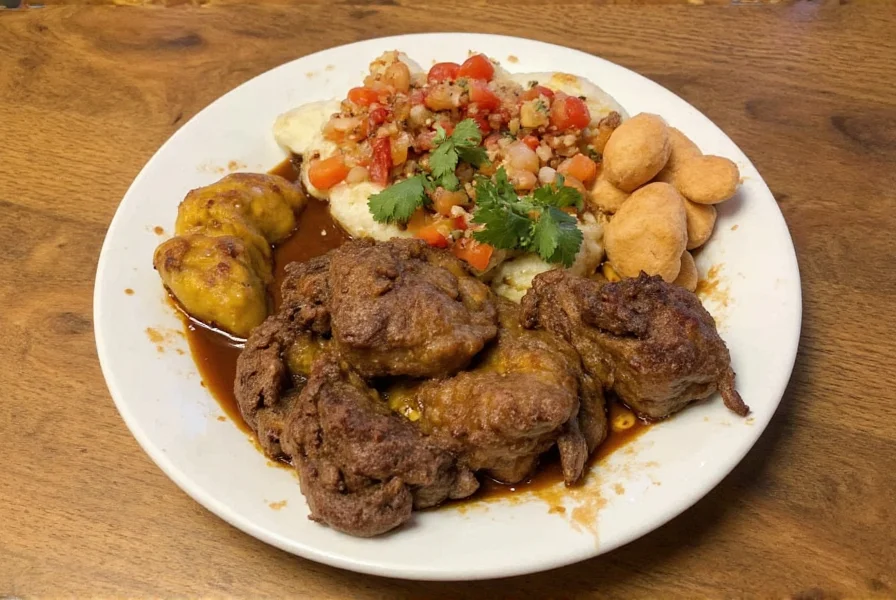Cajun vs Creole Seasoning: Spice Showdown – Which One Brings the Heat (and Which One Brings the Flavor)?
Are you ready to spice up your kitchen but confused about whether to reach for that Cajun or Creole seasoning? Don’t worry — you’re not alone! These two iconic Southern spice blends are often mistaken for each other, but they have distinct personalities that can totally change the flavor of your dish.
Table of Contents
- What’s the Real Difference?
- Spice Profiles at a Glance
- Where Do They Shine in the Kitchen?
- Visual Comparison Table
- Buying Guide: How to Choose the Right One
- Final Verdict: Which Should You Use?
So What’s the Real Difference Between Cajun and Creole Seasoning?
Let’s cut to the chase: both Cajun and Creole seasonings come from Louisiana, but they hail from different culinary traditions. Cajun seasoning is rooted in the rustic, hearty cooking of rural Louisiana. It leans heavily on pepper — especially black, white, and cayenne — giving it a fiery kick that’s hard to miss.
Creole seasoning, on the other hand, comes from the urban melting pot of New Orleans. Its flavor profile is more balanced, often including herbs like oregano, thyme, and parsley, along with garlic and onion powders. Think of it as a little more sophisticated — less fire, more finesse.
Quick Summary:
- Cajun: Pepper-forward, spicy, earthy
- Creole: Herb-forward, savory, aromatic

Spice Profiles at a Glance
If you’ve ever looked at a label and thought, “Wait, do these blends even have anything in common?” Well, yes and no. Both typically include salt, paprika, garlic powder, and onion powder, but the rest is where things diverge.
Cajun Seasoning Ingredients:
- Cayenne pepper
- Black pepper
- White pepper
- Paprika
- Salt
- Garlic powder
- Onion powder
Creole Seasoning Ingredients:
- Oregano
- Thyme
- Bay leaf
- Garlic powder
- Onion powder
- Paprika
- Black pepper
- Salt
- (Sometimes) Cayenne pepper

Where Do They Shine in the Kitchen?
Knowing what goes into these blends is one thing — but how do they perform in real recipes? Let’s take a look at when each shines its brightest.
Cajun Seasoning: The Firestarter
- Best For: Grilled meats, fried chicken, shrimp boils, gumbos, jambalaya
- Mood: Bold, punchy, unapologetic
- Why It Works: Cajun seasoning brings serious heat and depth, making it ideal for dishes that need that extra kick to stand out.
Creole Seasoning: The Flavor Architect
- Best For: Stews, seafood dishes, soups, roasted veggies, rice dishes
- Mood: Earthy, layered, elegant
- Why It Works: With its herbaceous character, Creole seasoning adds complexity without overwhelming the palate. Perfect for slow-cooked meals and sauces where flavors meld together beautifully.

Visual Comparison Table
| Feature | Cajun Seasoning | Creole Seasoning |
|---|---|---|
| Flavor Profile | Peppery, Hot, Earthy | Herby, Savory, Balanced |
| Main Spices | Black, White, Cayenne Pepper | Oregano, Thyme, Garlic Powder |
| Heat Level | High | Medium |
| Common Dishes | Gumbo, Jambalaya, Fried Chicken | Etouffée, Shrimp Pasta, Soups |
| Ideal For | Grilling, Frying, Spicy Meals | Braising, Simmering, Layered Flavors |

Buying Guide: How to Choose the Right One
Ready to stock your pantry with the right blend? Here’s how to pick the best Cajun or Creole seasoning for your needs — and what to watch out for!
Top Cajun Seasoning Picks
- Tony Chachere’s Original Extra Hot Cajun Seasoning
- Features: Signature spicy blend with bold pepper notes
- Advantages: Versatile for meat rubs, marinades, and grilling
- Use Case: Ideal for backyard BBQs, seafood boils, and high-heat dishes
- Audience: Home cooks who love intense flavor
- Occasion: Game nights, summer cookouts, and family dinners
- Zatarain’s Cajun Seasoning
- Features: Balanced heat with subtle garlic undertones
- Advantages: Great value for everyday use
- Use Case: Rice dishes, stews, and poultry
- Audience: Families and budget-conscious cooks
- Occasion: Weeknight meals, casual get-togethers
Top Creole Seasoning Picks
- Rex’s Original Creole Seasoning
- Features: Robust blend with fresh herbs and mild spice
- Advantages: Complex flavor without overpowering heat
- Use Case: Seafood, pasta, and vegetable roasting
- Audience: Gourmet cooks and herb lovers
- Occasion: Dinner parties, weekend brunches
- McCormick Gourmet Creole Seasoning
- Features: Mild and consistent flavor
- Advantages: Widely available, great for beginners
- Use Case: Everyday cooking, soup bases, casseroles
- Audience: Casual home cooks and newbies
- Occasion: Lunch prep, weekday dinners

Final Verdict: Which Should You Use?
In the end, choosing between Cajun and Creole seasoning really depends on the mood you're in — and the kind of meal you're craving.
If you want to ignite your taste buds with bold, smoky heat, grab the Cajun. If you’re going for depth, balance, and a touch of herbal elegance, go with the Creole.
Here’s a pro tip: why not keep both in your kitchen? You’ll never run out of ways to elevate your dishes — whether you’re grilling up some crawfish or simmering a rich, aromatic stew.
Now go ahead — spice up your life, one plate at a time!

Whether you're team Cajun or team Creole, there's no wrong answer — just delicious food waiting to happen.











 浙公网安备
33010002000092号
浙公网安备
33010002000092号 浙B2-20120091-4
浙B2-20120091-4